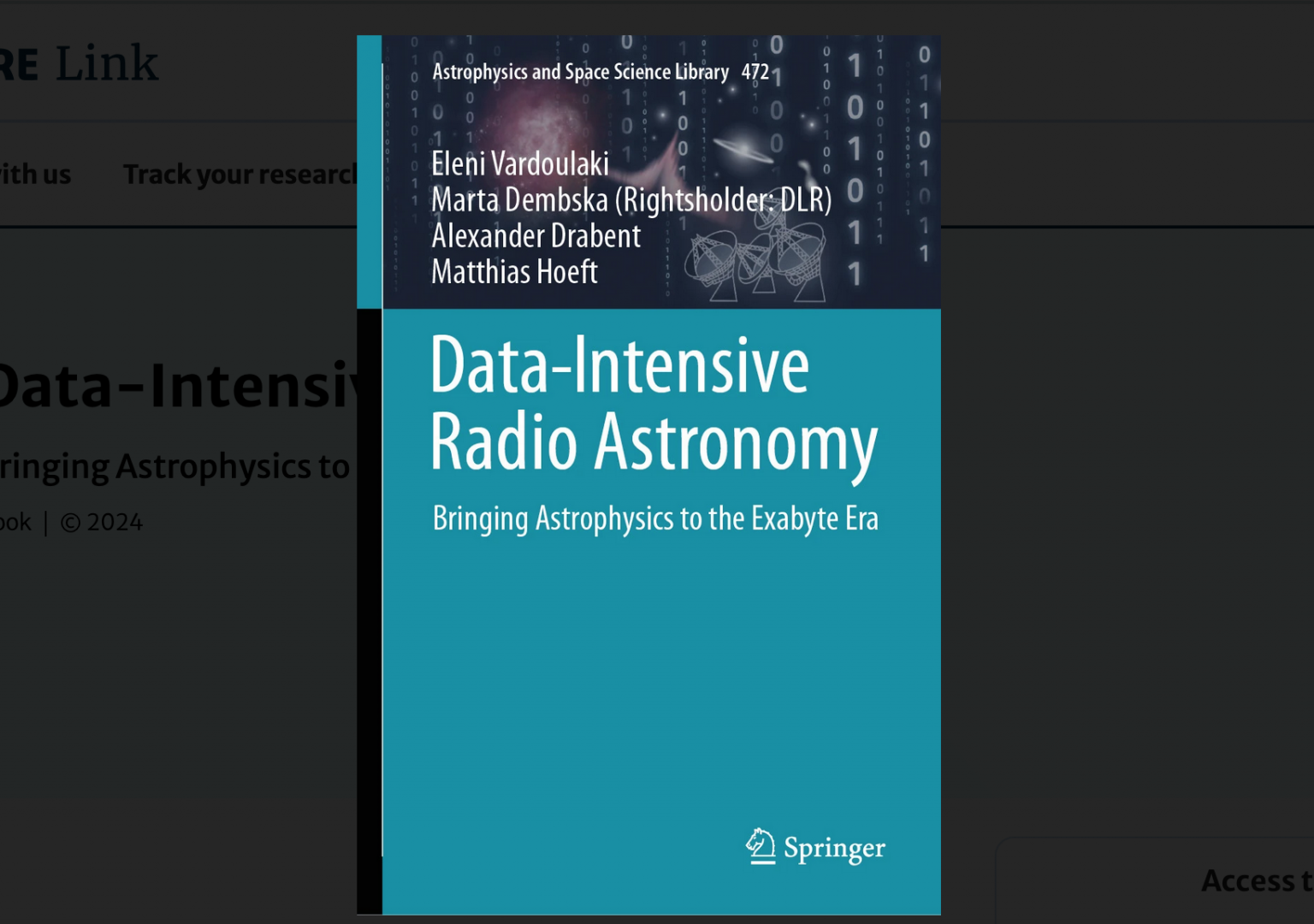One of the most topical issues in radio astronomy is how to process and archive huge amounts of data from modern telescopes. Researchers from the Thuringian State Observatory and the DLR Institute of Data Science in Jena have compiled expert knowledge of this topic in the book "Data-intensive Radio Astronomy".
Large international radio telescopes such as the Low Frequency Array (LOFAR) and the Square Kilometre Array (SKA) generate an almost unimaginably large amount of data. According to experts, the low-band array of the “Square Kilometre Array” in Australia alone will generate 5 zettabytes (106 petabytes) of data every year. By comparison, global internet traffic only exceeded 1 zettabyte for the first time in 2016.
In modern radio astronomy, hundreds of gigabytes of data per second will be collected and processed in so-called pipelines in order to generate scientifically usable results. Processing such huge amounts of data is a major challenge. Astronomers are therefore looking for efficient solutions that will lead astrophysics into the so-called exabyte era.
 Titel of the book "Data-Intensive Radio Astronomy", published by Springer. Screenshot: Springer
Titel of the book "Data-Intensive Radio Astronomy", published by Springer. Screenshot: Springer
Such large amounts of data require data processing to be rethought at all levels. These exemplary questions which scientists try to answer provide an insight into the specific issues at stake: How can such volumes of data be handled: how can they be created, stored or archived? How can the data be compressed efficiently without losing too much information? How can rare events be detected in these huge amounts of data? How can the data be made easily accessible to a large number of scientists? What will the archive of the future look like? And last but not least, how can data processing be made sustainable, i.e. energy-saving?
As part of a project funded by the Carl Zeiss Foundation in Jena to coordinate data-intensive radio astronomy in the Jena science region, Marta Dembska from the Institute of Data Science at the DLR (German Aerospace Center) in Jena as well as Eleni Vardoulaki, Alexander Drabent and Matthias Hoeft from the Thuringian State Observatory have published the book "Data-intensive Radio Astronomy". They have edited the first monograph on this topic with contributions from many international experts, This book brings together knowledge from various fields of research to provide an overview of the current state of data-intensive radio astronomy.
The book was published in November 2024 by Springer Nature Switzerland as part of the series "Astrophysics and Space Science Library". The E-Book version is available at Amazon.

